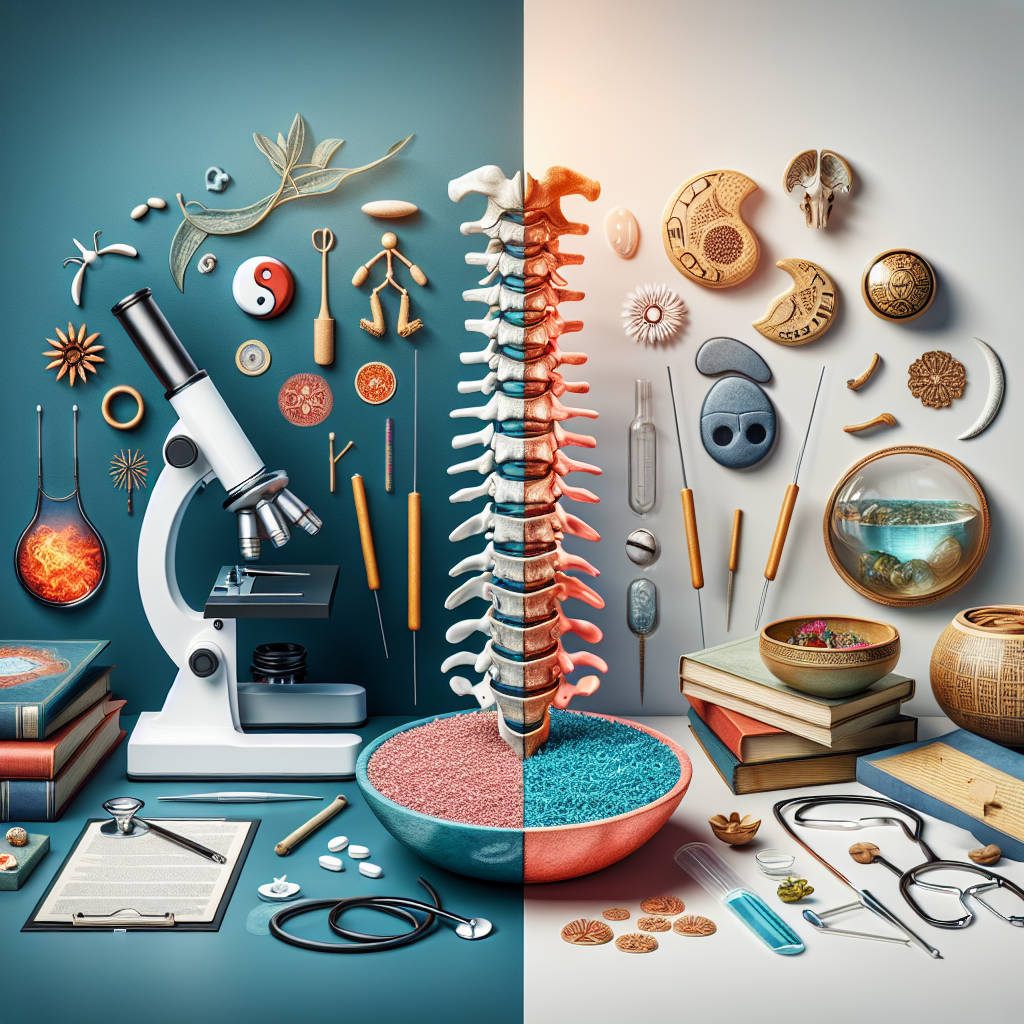Bridging Traditions: Integrative Approaches to Managing Osteoporosis through Western Medical Advances and Eastern Healing Practices
Osteoporosis, a condition characterized by weakened bones that are prone to fracture, poses a significant health challenge globally. It primarily affects the elderly but can also impact adults of any age. Traditionally, Western and Eastern medical practices have approached the treatment of osteoporosis from different philosophical and methodological standpoints. However, a growing body of evidence supports an integrative approach, combining the strengths of both to offer a comprehensive management strategy for osteoporosis. This article explores the convergence of Western medical advances and Eastern healing practices in creating a holistic treatment paradigm for osteoporosis.
Western Medical Advances in Osteoporosis Management
Western medicine has made significant advances in understanding the pathophysiology of osteoporosis, leading to the development of various pharmacological treatments aimed at preventing bone loss and reducing the risk of fractures. Bisphosphonates, for instance, are a class of drugs that slow down the rate at which bone is broken down, thus helping to maintain bone density. Denosumab, another medication, works by inhibiting the maturation of osteoclasts, cells that break down bone tissue. Additionally, hormone replacement therapy (HRT) can be beneficial for postmenopausal women, as it addresses the estrogen deficiency that accelerates bone loss.
Nutritional supplementation, particularly calcium and vitamin D, is another cornerstone of Western medical recommendations for osteoporosis management. Adequate intake of these nutrients is crucial for bone health, with vitamin D playing a pivotal role in calcium absorption and bone metabolism. Exercise, especially weight-bearing and muscle-strengthening activities, is also emphasized to enhance bone density and reduce falls risk.
Eastern Healing Practices for Osteoporosis
Eastern medicine, encompassing a broad range of healing philosophies and practices from cultures across Asia, offers a different perspective on managing osteoporosis. Traditional Chinese Medicine (TCM), for example, views osteoporosis as a consequence of weakened “Kidney” energy, which is believed to govern bone health. Treatment strategies in TCM often involve herbal remedies, acupuncture, and Tai Chi.
Herbal formulations in TCM are tailored to individual needs and aim to nourish the “Kidney” energy, strengthen bones, and improve overall vitality. Du Zhong (Eucommia bark) and He Shou Wu (Polygonum multiflorum) are among the herbs traditionally used for these purposes.
Acupuncture, another component of TCM, is purported to improve bone health by enhancing the flow of Qi (vital energy) through the body. Some studies suggest that acupuncture can alleviate pain and improve quality of life in osteoporosis patients, although more research is needed to fully understand its efficacy.
Tai Chi, a form of gentle martial arts known for its health benefits, is recommended for its ability to improve balance, coordination, and muscle strength, thereby reducing the risk of falls among osteoporosis patients.
Bridging the Divide: Integrative Approaches
The integrative approach to managing osteoporosis seeks to bridge the gap between Western and Eastern practices, drawing on the strengths of each to provide a more holistic care model. This approach recognizes the importance of pharmacological interventions in preventing bone loss and fractures while also acknowledging the value of lifestyle modifications, dietary approaches, and complementary therapies in supporting bone health and overall well-being.
An integrative treatment plan may include the use of medications like bisphosphonates or denosumab, coupled with nutritional supplements and a tailored exercise program. Alongside these, patients might engage in acupuncture sessions to alleviate pain and improve energy flow, incorporate specific herbal remedies under the guidance of a trained practitioner, and practice Tai Chi to enhance physical stability and mental relaxation.
This multi-faceted strategy not only aims to address the physical aspects of osteoporosis but also considers the emotional and psychological well-being of the patient. By fostering a sense of empowerment and promoting a proactive role in the management of their condition, individuals can achieve better health outcomes.
The Future of Osteoporosis Management
As the global population ages, the prevalence of osteoporosis and its associated challenges are expected to rise. The future of osteoporosis management lies in the continued exploration and integration of diverse treatment modalities, supported by scientific research and clinical practice. Advances in biotechnology and pharmacology, alongside a deeper understanding of traditional healing practices, hold promise for developing innovative and more effective ways to combat osteoporosis.
Furthermore, patient education and preventive measures will play a crucial role in reducing the incidence of osteoporosis. Early lifestyle interventions, including diet, exercise, and avoidance of risk factors like smoking and excessive alcohol consumption, are key to maintaining bone health across the lifespan.
Conclusion
Osteoporosis management stands at a crossroads, where the convergence of Western medical advances and Eastern healing practices offers a new paradigm for holistic care. By embracing an integrative approach, healthcare providers can leverage the best of both worlds to enhance the quality of life for individuals living with osteoporosis. This collaborative path forward not only promises better health outcomes but also signifies a broader shift towards a more inclusive and patient-centered approach to medicine. As we continue to bridge traditions, the potential for transformative healing and wellness becomes ever more attainable.

